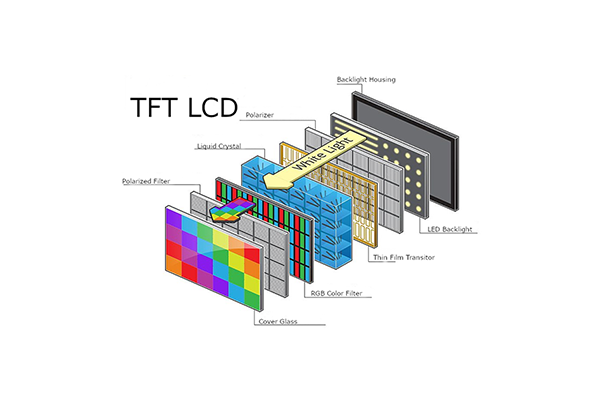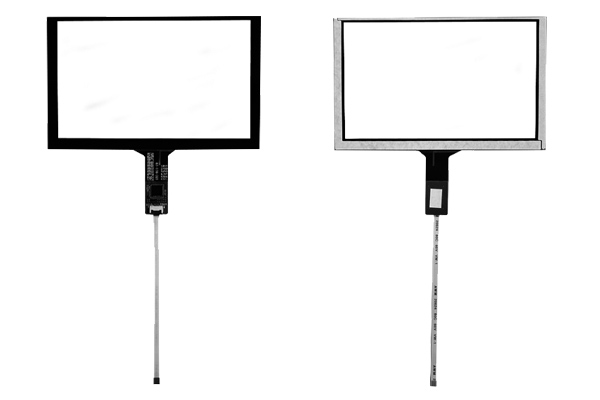What Are The Differences Between Resistive RTP TFT Screens And Capacitive CTP TFT Screens?
With the development of technology and the growth of usage demands, the touchscreen filed has undergone a gradual upgrading process from low-end to high-end. In modern electronic devices, touch screens have become an important part for HMI interaction. According to the working principle, the touchscreen can be divided into two major categories: resistive RTP touch screens and capacitive CTP touch screens. They each have their own characteristics and are suitable for various application scenarios.
What’s Resistive RTP touchscreen?
It operates on the screen based on the principle of pressure sensing. It has a film and glass structure. An ITO layer is applied on the adjacent side of the film and the glass. ITO has strong electrical conductivity. Due to the pressure of the fingers, the layers of the touch screen come into contact, causing a change in resistance. The sensor transmits the corresponding signal, which is then transmitted to the processor through the conversion circuit. After the processor calculates, it is converted into a value on the screen to complete the selection action, and the LCD display shows the picture effect.

The advantage of RTP TFT Screen
1.The production cost of resistive RTP touch screens is relatively cheaper, making them competitive in price-sensitive markets.
2. Due to the adoption of the pressure sensing principle, the resistive screen can support any object for touch operation (such as fingers, pen tips, etc.), without being restricted by conductive objects.
3. It can still maintain good working performance in harsh environments.
4. High precision: It can recognize relatively fine touch movements and is suitable for application scenarios that require precise input.
The disadvantage of RTP TFT Screen
1.Because a certain amount of pressure needs to be applied to trigger the touch event, the response speed is relatively slow.
2.After long-term use, the screen surface is prone to wear and tear, which affects the touch effect and lifespan.
3. Although some high-end resistive screens support multi-touch, on the whole, their multi-touch capability is weak or not supported at all.
4. Poor light transmittance increases battery consumption and only allows for single-point touch control
What’s Capacitive CTP touchscreen?
Working principle: The capacitive CTP screen actually operates based on human body current induction. That is to say, the capacitive CTP screen transmits signals from the lower layer to the upper layer. When the upper layer is in contact with a conductor, the lower layer can quickly receive the information and make calculations. Determine the position where your finger touches and respond. Capacitive CTP screens not only support multiple points simultaneously but also significantly enhance the sensitivity when touched by hand. The main feature of capacitive CTP touch screens is that they can achieve multi-touch.

The advantage of CTP TFT Screen
1. High clarity and transparency, good display effect.
2. High sensitivity, fast touch response, able to achieve smooth gesture operations, such as multi touch, providing a good experience in zooming, rotating images, and other operations.
3. High hardness, relatively wear-resistant
The disadvantage of CTP TFT Screen
1. The production cost is relatively high
2. Its working performance will be relatively low in extreme environments
3. Capacitive CTP screens are prone to interference from external factors such as electromagnetic fields, which can affect their normal use.
Touchscreens are widely used in fields such as mobile phones, tablets, retail industry, smart homes, industrial equipment, etc. Through touch screen technology, users can achieve human-computer interaction by gently touching the images or text on the display screen with their fingers.
In general, when choosing a touch screen, it should be determined based on the product's application environment and the target market.




